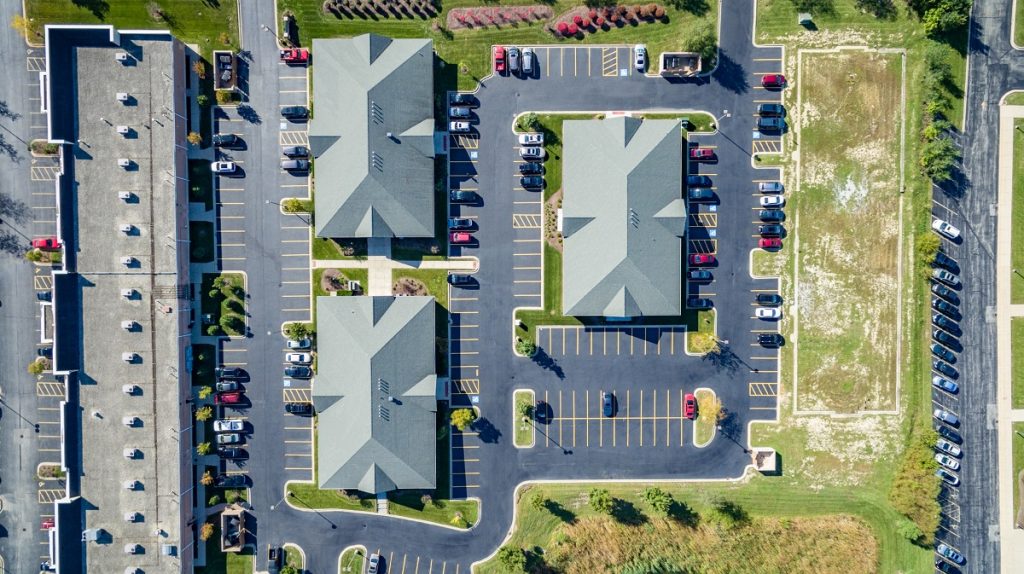If we look at digitisation projects among insurance companies, the majority are essentially process improvements and cost savings. Processes and costs. These are not exactly “modern” terms. They are more or less precisely the opposite of the usual buzzwords and statements about digitisation and innovation. Does that make them boring and traditional? No, definitely not. A single example, the use of image analysis, shows that process improvements can be very much state-of-the-art and innovative, not only saving costs, but also improving the customer journey.
Automated image analysis after car accidents
Automated image analysis after car accidents is becoming increasingly popular with insurers. This technique uses artificial intelligence to analyse photos of a damaged vehicle to assess whether the damage makes the vehicle a total economic loss or whether a repair is still worthwhile. It can also identify which repair shop is most suitable. At the same time, the system can check whether the image metadata, e.g., date and place of recording, matches the damage description.
This has several advantages. After proper training, the algorithm will be able to detect damage better than claims handlers, with the result that fewer cars will be repaired when it is not worthwhile. This better judgment also leads to higher accuracy in determining claims provisions early in the process and avoids tying up unnecessary capital. An automated decision also saves time, which has a positive impact on both internal costs and the customer experience. Customers are less and less willing to wait weeks to settle claims and expect constant transparency and good service.
But is a well-trained algorithm enough? Can you trust the pictures, or does that open the door to scammers and fraud?
The answer is no, a well-trained algorithm alone is not enough. There are many forms of “image fraud.” Sometimes images of damage are simply downloaded from the internet, or customers may try using images of previous damage, or digitally manipulating pictures to obtain insurance benefits. It is essential that insurers can trust the images and the associated metadata, but how can you ensure that, in a simple and uncomplicated way? Of course, there are image forensics experts, but this challenge can also be addressed technically using existing resources.
For example, almost all insurers already have a claims app. If the AI system is only allowed to analyse images that were made using the app and sent using its secure transmission process, this will go a long way to prevent fraud. If you want to go further, you can digitally seal the images and place them in a blockchain. This makes it even more certain that the photos for analysis have actually come from the customer, and at the same time, the blockchain is also an ideal basis for process automation, e.g., via smart contracts. This provides increased process transparency for the customer and reduced lead time and costs.
Before-and-after comparisons
Perhaps less popular, but no less interesting, is the before-and-after comparison of images by AI, for example, in buildings insurance.
 For example, if there has been roof damage after a storm, pictures are often useful. Sources can include drone shots, satellite images or even Google Street View. These images can help to assess the damage, but also to compare the damage with the condition of the roof before the storm or when the application for insurance was accepted. Both before and after images can come from the net, from third-party providers or even from insurers’ own underwriting systems, as well as the customer.
For example, if there has been roof damage after a storm, pictures are often useful. Sources can include drone shots, satellite images or even Google Street View. These images can help to assess the damage, but also to compare the damage with the condition of the roof before the storm or when the application for insurance was accepted. Both before and after images can come from the net, from third-party providers or even from insurers’ own underwriting systems, as well as the customer.
This has several advantages. Maps and images with storm data and images of damaged homes can be used to determine even more precisely how badly the property is damaged and how much should be set aside for the claim. This will also help with risk assessment and pricing in the future.
Insurers can check whether the description of the damage fits with the reality, if the repair has been carried out and to what quality, whether the repair was better or larger than necessary, the previous state of the building, and whether it had suffered any previous damage.
What comes after image analysis?
These two examples of automatic image analysis are so far being used by a few insurers. But with augmented reality, the next technical advance is already around the corner. With smartphones increasingly capable of AR, it is only a matter of time before this technology finds its way into claims handling. What if customers could submit an AR video from the scene, instead of a photo of the dented car? This would provide much more information and greater benefits, for example, about the environment and incident, and would presumably reduce the need for reviewers still further. The possibilities are endless – and far from boring.
Automatic image analysis are so far being used by a few insurers. But with #AR the next technical advance is already around the corner. The possibilities are endless! #Insurance #AI Click To TweetThis blog post was originally published in German on the regional blog site Mehr Wissen.

1 Comment
In fact when someone doesn't understand after that its up to other users that
they will help, so here it takes place.